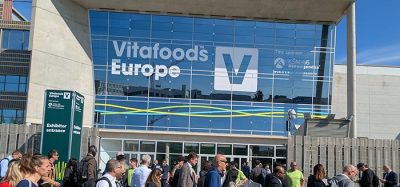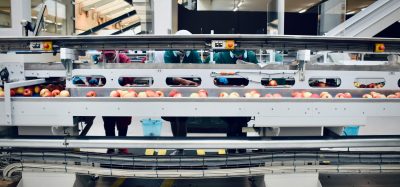Five predictions driving transformation in the food and beverage industry
- Like
- Digg
- Del
- Tumblr
- VKontakte
- Buffer
- Love This
- Odnoklassniki
- Meneame
- Blogger
- Amazon
- Yahoo Mail
- Gmail
- AOL
- Newsvine
- HackerNews
- Evernote
- MySpace
- Mail.ru
- Viadeo
- Line
- Comments
- Yummly
- SMS
- Viber
- Telegram
- Subscribe
- Skype
- Facebook Messenger
- Kakao
- LiveJournal
- Yammer
- Edgar
- Fintel
- Mix
- Instapaper
- Copy Link
Posted: 23 April 2021 | Marcel Koks | No comments yet
Marcel Koks offers his forecast into the future of food and drink and how technology, such as data driven decisions, will influence the sector in the coming years.


The unforeseen disruption experienced in 2020 has prompted food and beverage producers to future proof their businesses as far as is possible. While uncertainty seems set to continue for some time, by focusing on expediting time to market, food quality and safety, supply chain resilience, and the creation of omni-channel models, companies are putting themselves in the strongest position they can to embrace and capitalise on future opportunities.
Operational excellence is driving successful outcomes across many of these initiatives, as firms look to optimise resource efficiency, whether that’s people, energy, water, or all the above. In agriculture, for example, precision will become imperative as producers seek to reduce waste to feed a growing population sustainably. New technologies such as IoT will therefore become crucial in facilitating the granularity required to achieve this.
What does the future look like for food producers?
Prediction one – the Cloud
It’s evident that the Cloud is set for huge growth, as food and beverage businesses look to take advantage of fast deployment, automatic functionality updates modern capabilities to enable both robustness, and the agility to respond to market changes.
Cloud computing allows us to fully capture data from IoT (internet of things) devices and the extended supply chain. It uses AI to provide intelligence and make data meaningful. This goes way beyond installing a piece of software; what is smart today will be outsmarted tomorrow with even more clever logic.
A big advantage of the Cloud is having this kind of technology at hand as a service instead of having to do a lengthy IT project to implement something that will not scale. A good example of where this speed of deployment can really add value can be seen at a dairy company in The Netherlands I worked with recently. The company effectively spun out one of its entities and rather than embarking upon a lengthy software deployment to support it, they had a cloud platform set up in just three days, turning it into an agile business project.
The Cloud also represents an opportunity to implement changes faster, opposed to having to do technical migration projects, which often require teams to take a step backwards before being able to move forwards.
Prediction two – omni channel
Food producing companies have seen a huge shift in demand, with home deliveries taking precedence over restaurants and supermarkets. This trend is unlikely to snap back to pre-pandemic levels as consumers have now become more familiar with ordering their food online.
Being omni-channel makes a business less vulnerable and able to claim a larger piece of the market. We will see many food producers becoming omni-channel in 2021 by implementing ecommerce, either through an online store or by connecting to a digital marketplace.
Prediction 3 – Industry 4.0 technology
Despite the need to become more efficient and reduce food, water and energy waste, only six percent of food processors claim to be using IoT, with a further 12 percent stating plans to explore its role within the next two years. A staggering 82 percent have no plans in this area whatsoever.


Product recalls are one of the greatest financial risks food and beverage companies face. Yet research shows that no firms claim to be completely digital for track and trace and quality management, with only seven percent saying they are “largely” ready. Fifty percent say they are not digital yet, while 43 percent describe their status in this field as “limited”.
The good news is that in response to this trend, in 2021 more food producers will have paved the way by having a digital platform in place to capture data and connect this to the transactions in their ERP system.
Prediction 4 – data driven
A digital platform makes it possible to use IoT in a more holistic way. The first benefit of this is that faster and more targeted recalls will be possible, with the ability to identify and analyse the root cause of the issue immediately. The second is that data can be used to drive decisions and create a smarter company.
A good example is having insight into the inbound overseas shipments of crops; IoT sensors on sea containers keep track of the location, which, combined with shipping route statistics, results in real-time visibility and more accurate prediction of times of arrival in a control tower. IoT sensor readings during transportation, such as temperature, can be used primarily to proactively signal if the produce will not be good to use, so that alternatives can be sourced.
Secondly, storing quality attributes and temperature readings make it possible to more accurately predict the use by date. Finally, image recognition technology can provide detailed insight into the quality attributes of received produce.
This extends the control of the supply chain outside of the four walls of the factory and uses data from farm to fork to increase quality and productivity, reduce food waste and minimise food safety risks. In turn, this can turn challenges into a competitive advantage.
Other applications include implementing dedicated image recognition capabilities and machine learning (ML) to dynamically determine the quality of received ingredients and using that to determine the purchase price. For meat, this might include analysis of the carcass to understand the fat and muscle ratios, before grading them against a pre-set scale. For fruit and vegetables, the software might look for colour variation, depth of colour, spots, shape and size, all mapped against pre-set requirements.
Something which would have a big impact on food safety would be the use of IoT sensors to check whether equipment is clean, with the results triggering a cleaning order to avoid contamination risks.
Prediction 5 – transparency
Consumers are increasingly seeking more in-depth information about products to help drive their purchasing decisions, with 67 percent of consumers stating that they want to know everything that goes into the food they buy.
As a result, it’s important to demonstrate the efforts being generated into sustainability credentials to consumers. We are seeing a growing number of retailers putting pressure on producers to provide such information.
In 2021 and beyond, we will see that this will be expanded from fruit and vegetables and meat, poulty and fish, to more product categories, and used to differentiate producers and prove the sustainability of the supply chain. Currently used in categories which have been subject to scandals, under specific scrutiny when it comes to sustainability, or those which are relatively straightforward to work with, we are likely to see more insight in dairy, for example, where sustainability is an increasing challenge. This means extended control of the supply chain from farm to fork and identifying, for example, whether the crop is GMO-free and what kind of crop protection has been applied, among other factors.
Conclusion
There’s no doubt that technology is the future of a safer, more sustainable, customer-centric food and beverage industry. As both consumer scrutiny and compliance converge to put pressure on producers, the coming years will see both a shift in thinking when it comes to what optimum performance looks like for food companies, and an increase in adoption of new technologies such as Cloud, IoT and AI to facilitate this vision.
About the author
Marcel Koks is a food and beverage industry expert with more than 20 years of experience in using, implementing and developing enterprise applications for resource planning (ERP) and supply chain management. Marcel has a proven track record consisting of many new customer wins, successful implementations and development of solution portfolios for numerous micro verticals within food and beverage industries. He currently works at Infor as the Industry & Solution Strategy Director for the food & beverage segment.
Related topics
Data & Automation, Equipment, Robotics & automation, Technology & Innovation, Traceability









